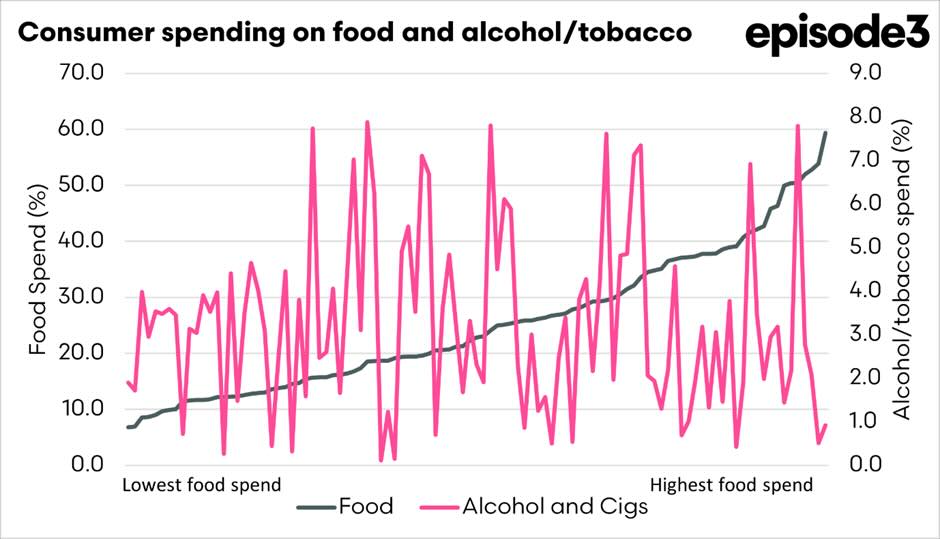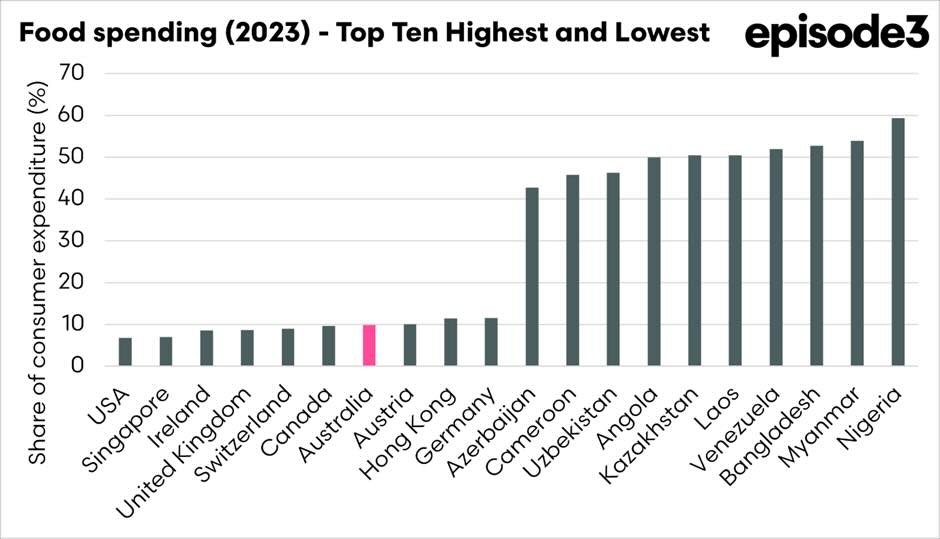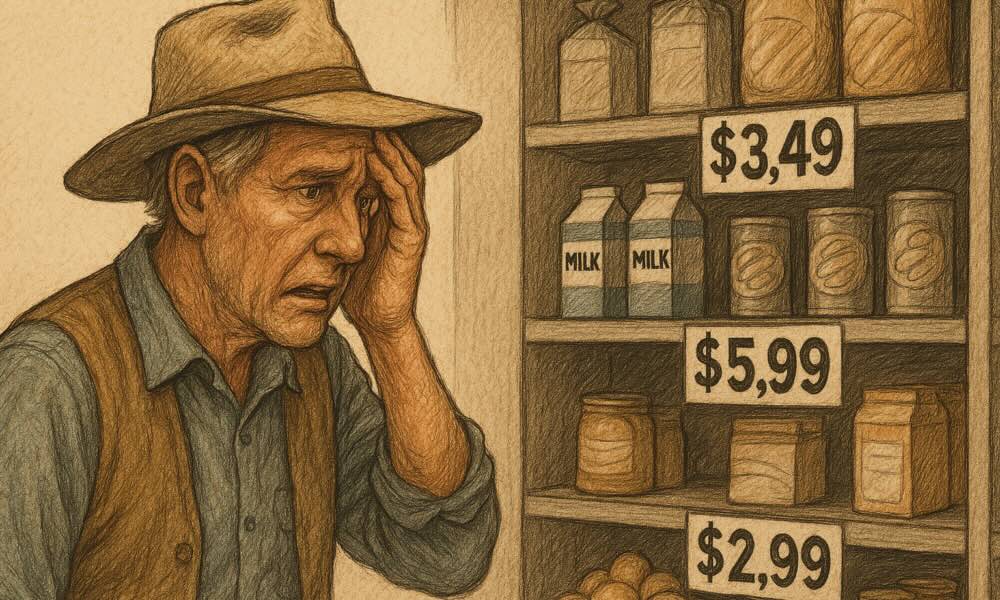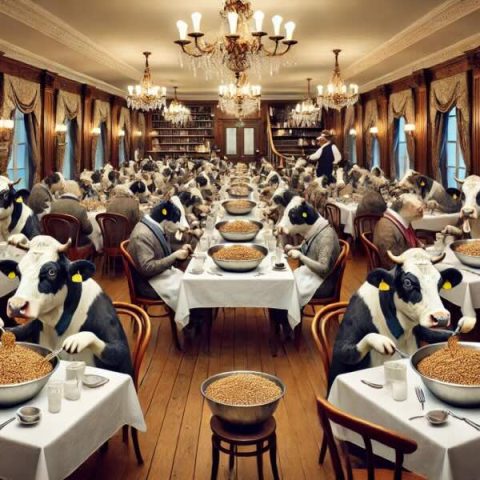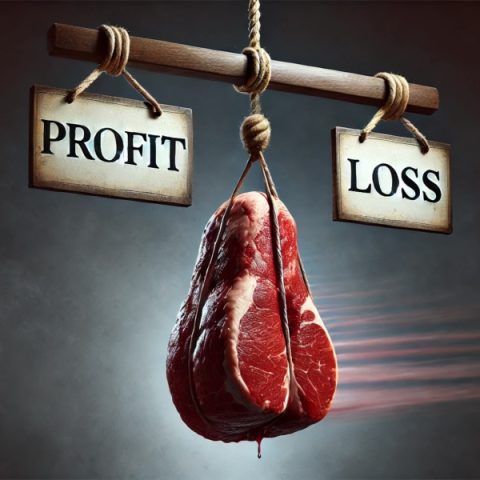Frustrated farmers
What people spend on food, alcohol, and tobacco tells a powerful story about how societies function and what people can afford. Looking closely at these spending patterns worldwide, Australia stands out as a country where relatively little of the household budget goes toward food. Food makes up just under 10% of consumer spending in Australia, which is low by global standards and places it firmly in the high-income category. Alcohol and tobacco spending is around 3.6%, meaning Australians spend more on lifestyle items like drinks and cigarettes than many people in lower-income countries can even dream of. The combined “essentials” spending on food, alcohol, and tobacco totals just over 13%.
At first glance, this might suggest a good news story: people in Australia can cover their needs and still have money left over. But when you look at it from the perspective of farmers, this trend is deeply frustrating. Australian farmers, especially those producing food, see only a tiny fraction of the money consumers spend on food. Supermarkets, processors, and transport companies take the bulk of the food dollar, while those growing the produce face tight margins, rising costs, and global market pressures.
In a country where food is so affordable relative to income, it’s easy for consumers to assume prices are fair and farmers must be doing fine. But that’s rarely the case. The cheapness of food at the checkout often hides the squeeze placed on the producers at the beginning of the supply chain. Meanwhile, consumers willingly spend a similar or greater share of their money on alcohol and tobacco products that are heavily taxed, processed, and branded and often involve far fewer producers.
This contrast between the low value placed on food and the relatively higher tolerance for spending on things like alcohol can be disheartening for farmers. It raises uncomfortable questions: Why is milk expected to be cheaper than bottled water? Why is a steak scrutinised for price, while a six-pack isn’t? Why do farmers carry the financial and climate risks only to receive a fraction of the end price?
To make matters worse, many farmers also face pressure from consumers to farm more sustainably, reduce emissions, or improve animal welfare all of which add costs. But suppose consumers and retailers aren’t willing to pay more for food. In that case, these expectations become yet another burden placed on people already earning slim returns.
Australia’s spending patterns reflect a society with plenty of economic choices, but that same freedom can be a sore point for farmers, who see their essential products undervalued in terms of both price and priority. While Australians enjoy the benefits of affordable food, the people who produce it are often left wondering why their work is treated as less valuable than the lifestyle extras that sit beside it on the shelves.
